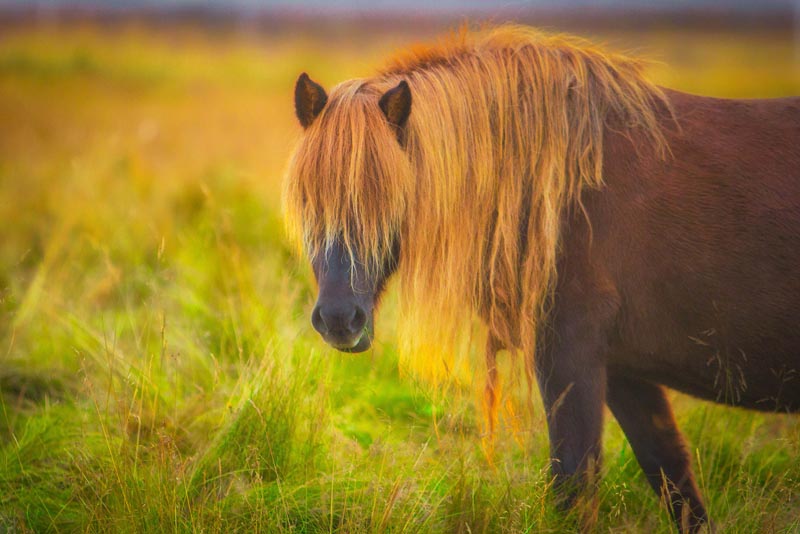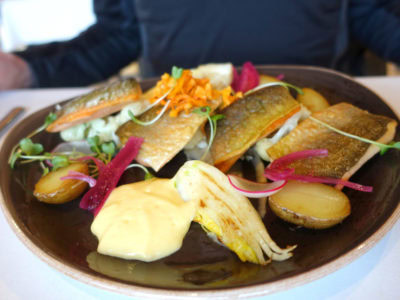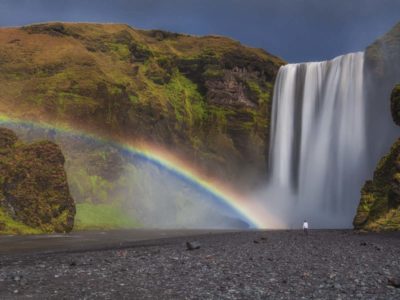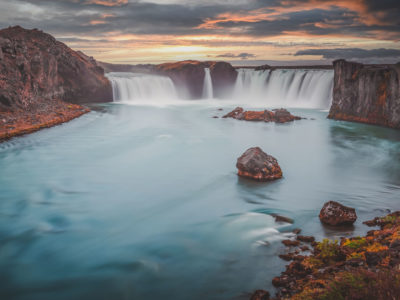Iceland is a country of ever-changing weather, creating some of the most dramatic scenes you will ever witness.
It is a country whose love of the supernatural, especially elves, trolls, and hidden beings, is incredibly intriguing if not a little odd. Iceland is the land of Water.
Their water is so clean that you can drink it right out of the rivers. Glacier melt occurs constantly and water is forever flowing from its mountains. It is a country whose variations of green and yellow flora stand out against its dramatic stormy skies.
Iceland is a country that mystifies and entices and it should be one everyone’s bucket list. This Iceland travel guide will help you plan your next vacation.
Table of contents
Table of Contents
Fast Facts about Iceland
- Icelandic power voltage is 220 V 50 Hz; Power sockets F
- The local currency is the Icelandic Króna (ISK) and is around 133 ISK to 1 USD.
- When flying into Iceland, you will arrive at Keflavik International Aiport, around 45 minutes from the city of Reykjavik. The cheapest way to get to Reykjavik is by bus: flybus that is.
- The legal drinking age is 20. Most alcohol is sold in state-controlled stores called Vinbuð, with limited opening hours. Alcohol can be expensive, so save some cash by stocking up at the duty free store at Keflavik airport.
- Value added tax (VAT) is charged on purchases, such as meals at restaurants, shopping expenses and hotel accommodations. If you are resident of a non-European Union country, you can get a refund of this tax in certain participating shops. For more info on VAT refunds, click here.
Things to See and Do in Iceland
- Explore the 5 Natural Wonders of Reykjavik – embark on a boat tour to whale watch, explore the city’s geothermal wonders, catch a glimpse of the Northern Lights or go scuba diving in or near Iceland’s capital!
- Take a ride on an Icelandic Horse – Not only is the Icelandic Horse the prettiest horse in the world, but they are also the only horse that can tölt.
- Visit the Blue Lagoon – This may be the most famous attraction in Iceland, but you’ll understand why once you visit it.
- Travel to the West Fjords – The West Fjords are not as popular among tourists. The region is beautiful and known for mysticism, magic, and folklore.
- Go Swimming in a Natural Hot Pool – There are many geothermally active pieces of land in Iceland’s landscape. It is not uncommon for tourists to dig mud pools and enjoy a soak in the hot springs that erupt.
Iceland Travel Guides
Budgeting
Accommodation
Budget – While accommodation in Iceland is typically expensive, travelers on backpacker budgets can usually find room in hostels that cost between $44 – $140 per night. If you are willing to pay more you can get a private room and bathroom to yourself.
Mid Range – The cheaper hotels in Iceland typically cost between $161 – $235 per night. You might be able to get better deals if you visit Iceland in the March / April and September / October months when prices are cheaper.
High End – Higher-end hotels in Iceland cost between $300 – $600 per night. While they are all luxury hotels, their pricing varies due to the age of each establishment. Guests are treated to the finest of Icelandic luxury.
Check out our favorite booking platforms Booking.com, Tripadvisor and vrbo for the best deals on accommodation in Iceland.
Food
- Skyr – Skyr is similar to yogurt but is made out of cheese. It is usually served with milk and sweet fruit like raspberries.
- Lamb – Lamb and sheep meat are loved by most Icelanders. You can find a variant of slow-roast lamb in almost every restaurant you visit.
- Hakarl – Hakarl, or fermented shark, is Iceland’s national dish. It is not found everywhere you go, but tasting it would be a good experience.
- Hot Spring Rye Bread – This dark rye bread is a popular Nordic bread that is served alongside many other meals. They are available in most bakeries and grocery stores.
- Puffin – Puffin is a type of seabird which is cooked by boiling it in milk. Although it is not consumed widely, it is another Icelandic meal that should be tested for the experience.
The Best Ways to Get Around Iceland
Getting to Iceland:
Flights: Many European countries fly directly to Iceland, and more North American cities are as well now.
You can check for the best flights to Iceland on Skyscanner.
Transportation:
Buses: There are a few bus companies operating bus systems in Iceland. In the Capital Region, Strætó bs operates bus services while Akureyri is serviced by Strætisvagnar Akureyrar.
Taxis/Uber: To get a taxi in Iceland, you need to call for a driver from one of the taxi companies. Hreyfill Bæjarleiðir and BSR are the two major taxi companies. There is no Uber in Iceland.
Car Rental: It is very advisable to rent a car if you are visiting Iceland. Some of the more popular car rental companies include Thrifty Car Rental, Cheap Car Rental Iceland, and Blue Car Rental.
You can also compare prices here.
When to go To Iceland
- Your decision for when to visit Iceland depends on your reason for going. If you want to go whale watching, the best time to go is May – September.
- If you want to see the Northern Lights, you will need to go between June – August. This is also a good time for hiking.
Where to Stay in Iceland
- Fljótsdalur Hostel – Located in southern Iceland, Fljótsdalur Hostel is one of Iceland’s most peaceful residences. It offers a stunning landscape and a magnificent library with over 2000 books!
- Deplar Farm – This hotel brings its guests on an adventure surrounded by beautiful pastures and snowy mountains. Guests can enjoy heli-skiing and salmon fishing while they stay in this Icelandic residence.
- Hotel Rangá – Located in Hella, this upscale boutique hotel is situated by the riverside. Its rooms are romantic and well decorated and top-quality Nordic cuisine can be eaten in its restaurant.
Check out our favorite booking platforms Booking.com, Tripadvisor and VRBO for the best deals on accommodation.
What to Pack for Iceland
Iceland lies just below the Arctic Circle, yet thanks to the warming effects of the Gulf Stream, extreme seasonal temperature variations are rare: winters are usually mild while summers are cool. See this packing list What to Pack for a Winter Trip to Iceland
Nevertheless, Iceland is also known for its volatile climate with frequent and abrupt weather shifts, such as overcast skies, rain, strong winds and fog. Don’t be surprised if you experience 4 different seasonal climates in just one day!
- Laundry detergent / soap – there are no self serve laundromats in Iceland, only dry cleaning. The easiest option (especially for socks and undies) is to wash them in the sink/bathtub when needed.
- Layers – The general rule of thumb is to pack at least four layers: a base layer, long sleeve shirts, a fleece (mid-layer) and a top layer such as a windbreaker (waterproof!). Base layers should be made of wool or synthetic fabrics – these fabrics offer superior moisture-wicking and temperature control protection than cotton. And don’t forget your head, fingers and toes!
- Insect Repellent – Along with natural beauty and warm weather, spring and early summer in the interior or the Mývatn area are known for their pesky little insects. Travellers are advised to bring a mosquito net, insect spray or a mosquito headnet.
- Hiking Boots – pack a good pair of boots with good grip that are waterproof and insulated for spring/winter travel.
- Swimsuit – you can’t visit Iceland without taking a dip in one of their many thermal pools or warm springs.
- Sleeping Mask The midnight sun (as early as May and as late as August) can make sleeping difficult.
- Binoculars – great to have if you plan on going on cruises, and/or hiking, boating or nature tours.
See our packing tips: packing tips
Iceland Travel Guide: Best Booking Resources
Whenever we travel to we make sure to start with these companies. We have tried a lot of different ones over the years and all of these have consistently proven to be the best when it comes to offering great prices.
We have used every one of these personally and continue to do so.
- Booking.com: This is our go site to when comparing prices for accommodation. It usually has the cheapest prices, especially in Europe and we love their interface. Not to mention you get free cancellation and you are guaranteed the best price.
- Trip Advisor: What we like about Trip Advisor is that we can look at all the reviews and then book our accommodation. TripAdvisor is where we go when we want to compare prices with multiple accommodation providers.
- VRBO: is the main search engine we use when we are looking for a home or apartment rental. It can sometimes be cheaper than hotels and it is the best way to stay in areas that offer a more local feel.
- Hostelworld: With one of the largest databases of hostels in the world, Hostelworld is the go-to site when you are looking for budget accommodation.
- Skyscanner: This is the first place we check for flights. It consistently comes back with the cheapest and best options. It allows us to compare a lot of airlines to get the best price.
- Rome 2 Rio: If you want to see how to get somewhere by plane, train, bus, ferry or car Rome2Rio lays it all out for you as well as related costs.I love how they show it all to you on a Google Map and it works offline.
- Get Your Guide: For all your day trip and city guide needs, we use Get Your Guide. It has the world’s largest collection of things to do with more than 30,000 activities in 7500 destinations.
- World Nomads Insurance: When traveling to Italy you should always have travel insurance. We have found the best bang for your buck is by far World Nomads.
Iceland Travel Guide: Related Articles
To browse all our articles and guides about Iceland click here.




